26th annual Cherry Blossom Heritage Festival Feb. 2
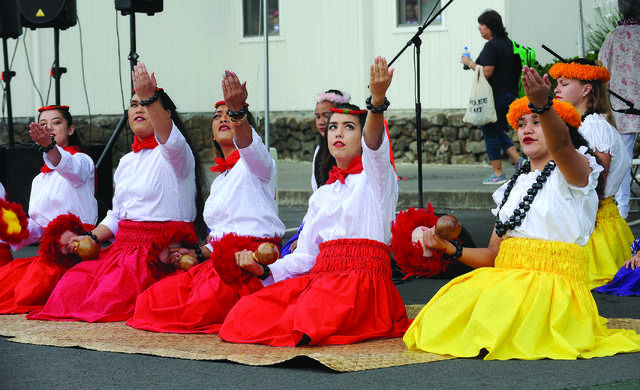
Members of Hula Halau Ka Noeau performed at the 25th Annual Waimea Cherry Blossom Heritage Festival. (photos by Laura Ruminski/West Hawaii Today)
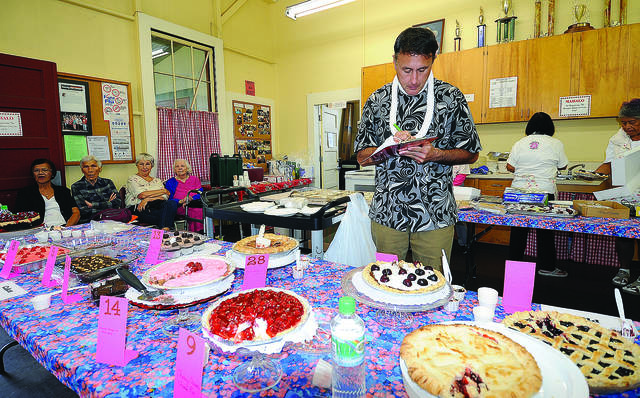
Reverend David Stout judges the cherry baking contest at the 25th annual Waimea Cherry Blossom Heritage Festival.
Reverend David Stout judges the cherry baking contest Saturday at the 25th Annual Waimea Cherry Blossom Heritage Festival. (Laura Ruminski/West Hawaii Today)
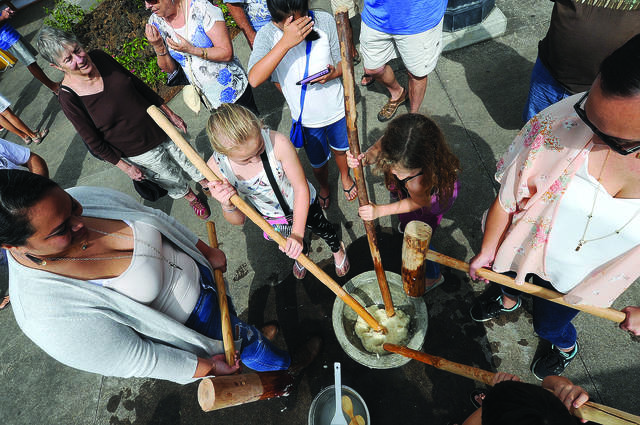
Visitors take turns pounding mochi the traditional way at the 25th annual Waimea Cherry Blossom Heritage Festival.
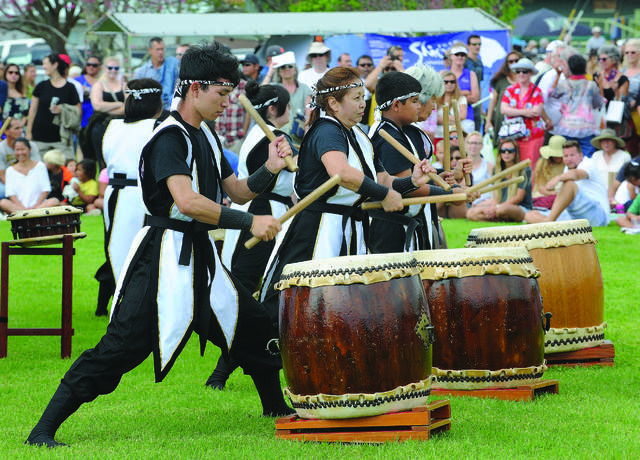
Members of Hui Okinawa Kobudo Taiko perform in 2018 at the 25th annual Waimea Cherry Blossom Heritage Festival.
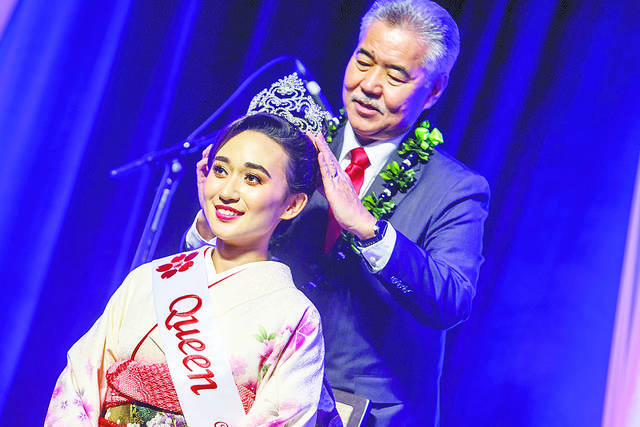
The Queen Contestants’ Cherry Blossom Festival Ball is a formal evening of fanfare and tradition that highlights Japanese culture. (Photo By James Garrett / Special to the Honolulu Star-Advertiser)
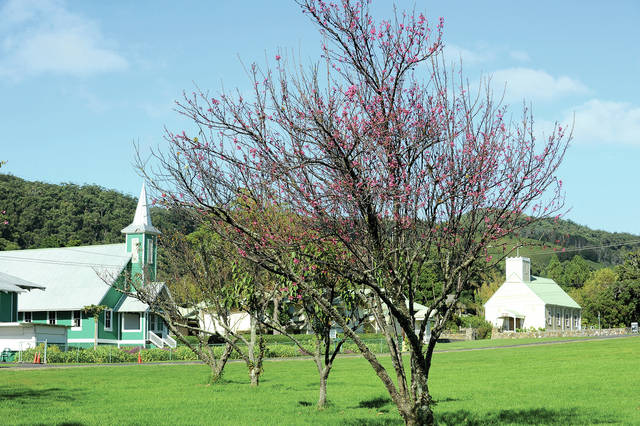
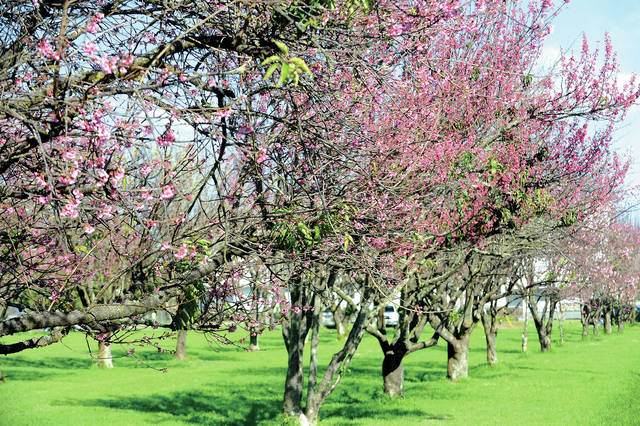
Cherry blossoms are in bloom at Church Row in Waimea. (Laura Ruminski/West Hawaii Today)
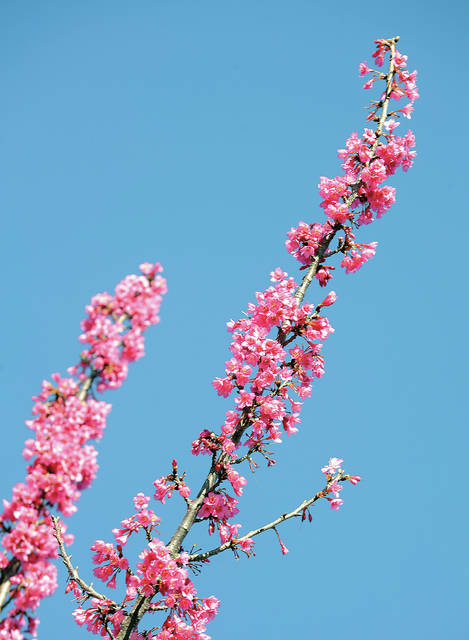
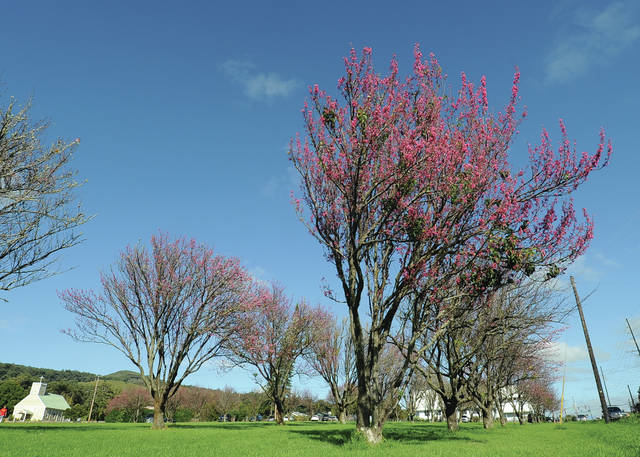
Cherry blossoms are in bloom at Church Row in Waimea. (Laura Ruminski/West Hawaii Today)
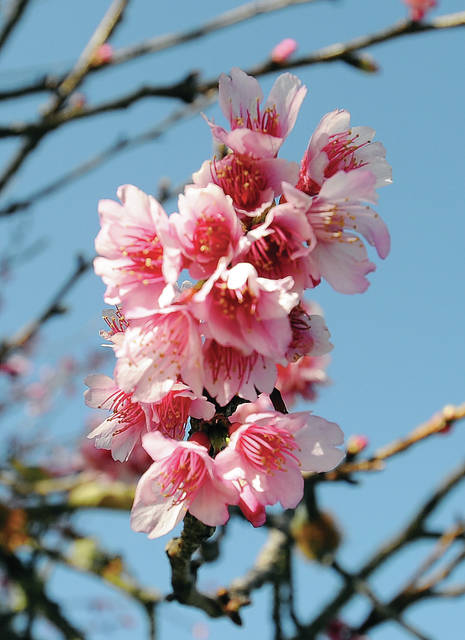
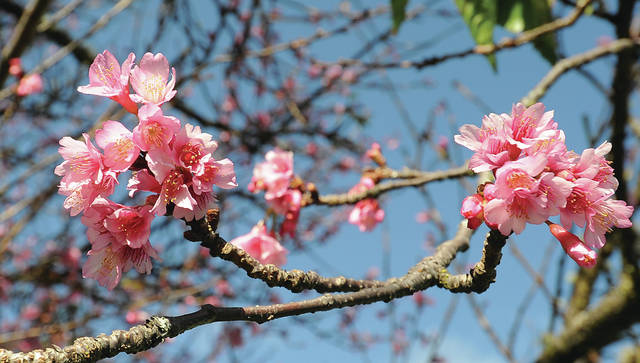
Cherry blossoms are in bloom at Church Row in Waimea. (Photos by Laura Ruminski/West Hawaii Today)
WAIMEA — It’s almost time for Waimea to turn pink with culture, food, entertainment and crafts.
WAIMEA — It’s almost time for Waimea to turn pink with culture, food, entertainment and crafts.
The 26th annual Cherry Blossom Heritage Festival will take place from 9 a.m. to 3 p.m. Feb. 2 with activities happening throughout town.
Church Row Park is the home to the famous “Sakura” — Japanese cherry blossom trees — and as many as 60,000 people attend the festival from all across the globe.
“There’s a lot to see and hear and it’s like a real sensory thing. You can taste all of these ethnic foods, you can pound mochi,” said Fern Gavelek, spokeswoman for the festival. “It’s just such an interactive participating thing — you get to meet different people.”
The Japanese word “Hanami” translates to cherry blossom viewing party celebrating the arrival of spring.
The cherry blossom trees first came to Waimea in 1953 to commemorate Fred Makino, the founder of Hawaii Hochi, Hawaii’s Japanese language newspaper. Three trees were dispersed and planted. Soon after, Isami Ishihara, a Waimea gardener and bonsai master, reproduced the trees and donated the seedlings to the Waimea Lions Club, a community service organization which began planting additional trees in 1972.
The idea to adorn church row park stemmed from rumors of a road being built to bypass Waimea. The cherry blossom trees were a way to draw attention to the town.
Since then, the Waimea Lions club has been the caretakers of the Church Row trees and hosts a pictorial history booth at the Cherry Blossom Festival.
“Church Row over the years has really become a hub now,” said Kathy Manuel, president of the Waimea Lion’s Club. “Even town is full, too! My favorite thing is just seeing all the different people coming to Waimea.”
After its establishment in 1993, the festival always occurred on the first Saturday of February as a time that aligns with the flowers blooming period typically after a seasonal winter chill.
Some of the festival-goers favorite activities are Taiko drumming, a Japanese Tea ceremony from the Urasenke Hilo Association, hula performances, a craft fair featuring over 150 vendors, and 500lbs of mochi pounding by the Kona Hongwanji mission.
This year, festivities are expanding to the Waimea Center.
As a new participant in the festival, the center will feature Taiko drumming, a performance from the Honokaa Jazz Band, and a Chinese lion dance in center court. KTA superstores will be offering food sampling, sake tasting and activities for the keiki.
Jada Rufo has been attending the festival since she moved to Waimea six years ago.
“I used to live in China, and I also used to live in Japan and for me, going to these cultural festivals is a way of just readjusting to my home country and also getting my fix of East Asia,” she said.
This year, Rufo will be present as a vendor with the Hawaii Writer’s Guild and is looking forward to watching her favorite festival feature, the Taiko drum performances.
“I think it’s a way of not just bringing communities together, but it also allows people to learn and experience different cultures,” said Rufo.
The festival is organized by members of the upcountry community and the county’s Department of Parks and Recreation.
Pink banners will identify different site locations and transportation is provided to and from various venues.


